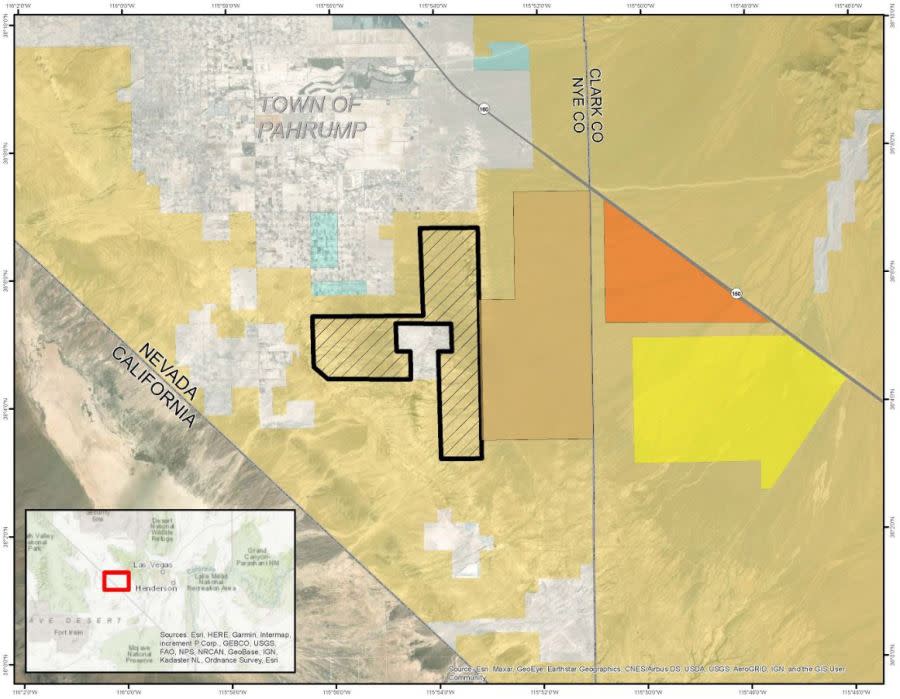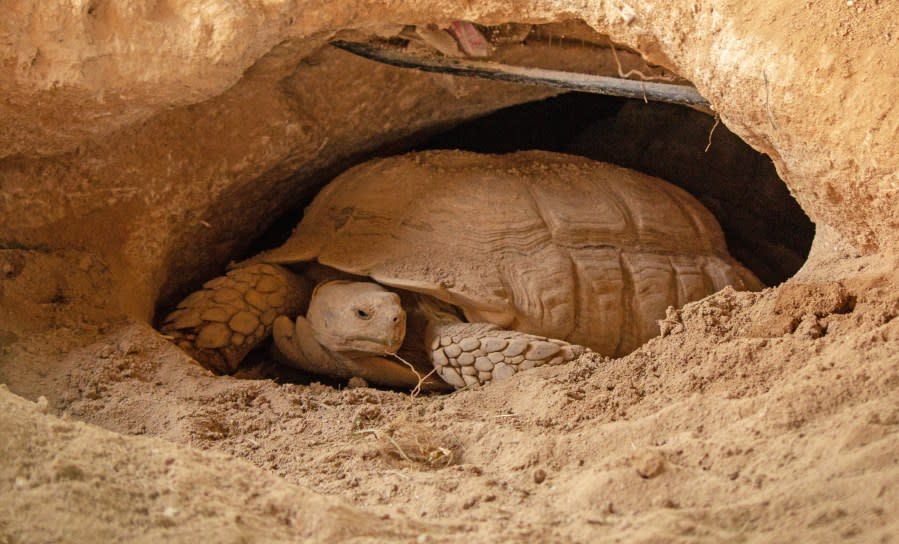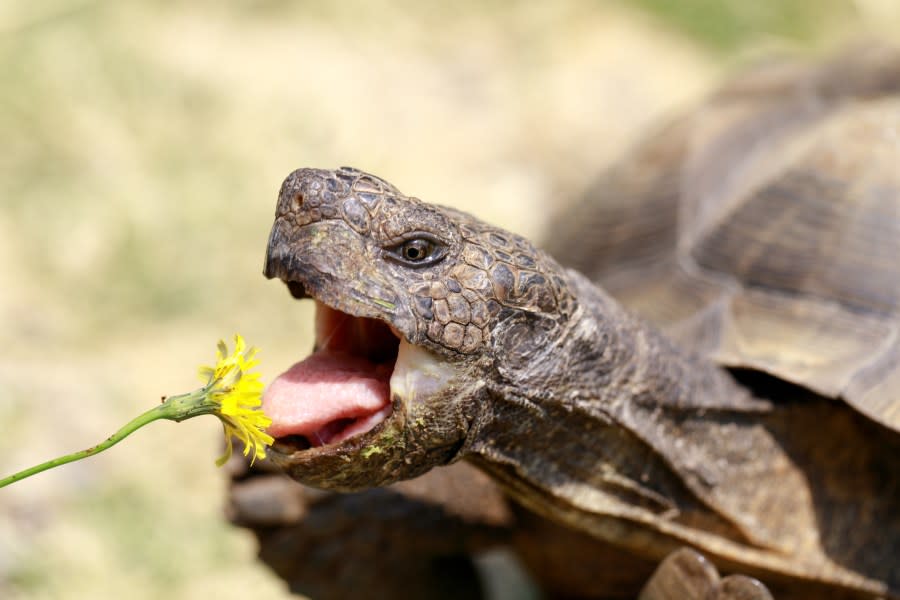Desert tortoise habitat cited in request to kill solar project south of Pahrump

LAS VEGAS (KLAS) — Building a new electric grid is a slow process, but it’s moving too fast for the desert tortoise — a Mojave Desert resident for millions of years.
The nonprofit conservation group Basin and Range Watch on Monday asked the federal government to halt efforts to build a 4-square-mile solar field south of Pahrump. It could be an early test of an emerging conflict over using public lands in Nevada to build out renewable energy production on an aggressive schedule.
Kevin Emmerich, co-founder of Basin and Range Watch, released a letter on Monday calling for an end to the Rough Hat Clark County Solar Project. The letter asks the U.S. Department of Interior, Bureau of Land Management and U.S. Fish and Wildlife Service to stop work on an Environmental Impact Statement (EIS) and further review of the project.

Developing Rough Hat, a 400-megawatt solar photovoltaic facility on 2,400 acres “would destroy nearly 4 square miles of Mojave Desert habitat for solar panels, battery storage banks, and new transmission lines. The project is one of 6 large-scale solar projects and transmission upgrades either built or proposed for Mojave Desert habitat on public lands in the area,” according to the letter.
Emmerich isn’t the only voice against the plan.
“Pahrump Valley is, by and large, an intact Mojave Desert ecosystem, full of desert tortoises and Joshua trees and wildflowers and all of the biodiversity that makes this desert one of the most special places on Earth,” said Patrick Donnelly, Great Basin director at the Center for Biological Diversity. “We support thoughtfully-sited solar projects that avoid sensitive species and habitats. Rough Hat Clark is not one of those. BLM’s current plan to turn Pahrump Valley into an enormous solar energy zone is extremely problematic. The Department of Interior needs to identify other less sensitive locations for solar development.”
Rough-Hat-Clark-Solar-Cancellation.March-24-1Download
A news release accompanying the 12-page letter cites the EIS estimate of 114 adult desert tortoises on the Rough Hat site. Those tortoises would be picked up and moved if the project moves forward, but hatchlings and juvenile tortoises would be left behind — likely to be crushed or buried alive by earth movers. Young tortoises the size of silver dollars usually outnumber adults, according to the letter. A survey on an adjacent site found nearly three times as many juveniles compared to the adult tortoise population.
“Approval of the Rough Hat Clark County Solar Project will likely contribute to this on-going extinction trend by digging up and moving over 100 adult desert tortoises,” Emmerich said. “Associated with desert tortoises are dozens of other species of plants and animals that will be harmed by this project. The desert tortoise is a true indicator species of the overall health of Mojave Desert habitat.” Basin and Range Watch has set up a petition on change.org to cancel the EIS process.
Ileene Anderson, a senior scientist/California Desert Director at the Center for Biological Diversity, said populations of desert tortoises are continuing to decline, with the exception of growing numbers in Northern Nevada.

“The majority of the population is tanking,” Anderson said. The species that lives west and north of the Colorado River is Gopherus agassizii. It was listed as a threatened species in 1990.
In California, the Desert Renewable Energy Conservation Plan contains strict rules that apply to the removal of tortoises for renewable energy projects. Those kinds of rules aren’t yet in place in Nevada, but there haven’t been any studies completed on what happens if the tortoises are brought back after construction is done.
5 alternatives show BLM lands set aside for solar projects in Nevada, western US
“We don’t know the outcome of that grand experiment,” Anderson said, adding that while tortoises might survive being displaced and returned, little is known about how that affects reproduction and longevity in the species.
It would surely stress the tortoises, and that just adds to the “cascade” of things that are currently affecting the population, according to Anderson. Among the other factors: drought and the presence of invasive species.

Anderson said invasive plants are taking over the desert tortoise’s habitat. The tortoises are eating the new plants, but the invasive vegetation doesn’t have the same nutritional value.
Another factor is mycoplasma disease, which usually presents itself as a runny nose in desert tortoises.
As far as the Rough Hat development, Anderson said if the tortoise is going to survive we should be studying populations that thrive — not relocating them to destroy the habitat.
For the latest news, weather, sports, and streaming video, head to KLAS.

